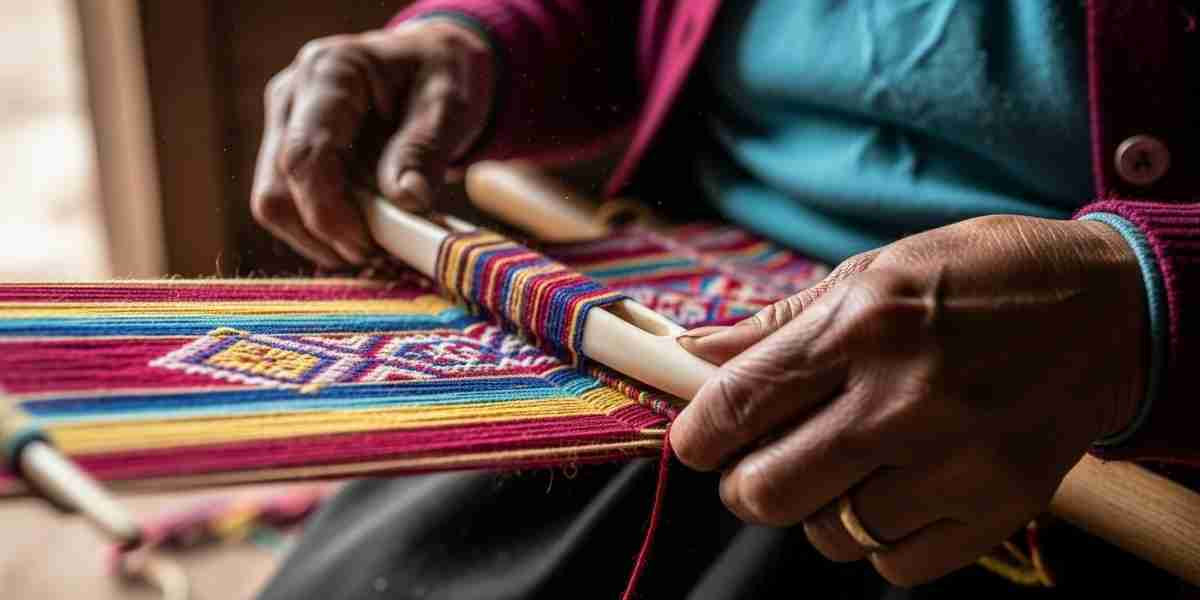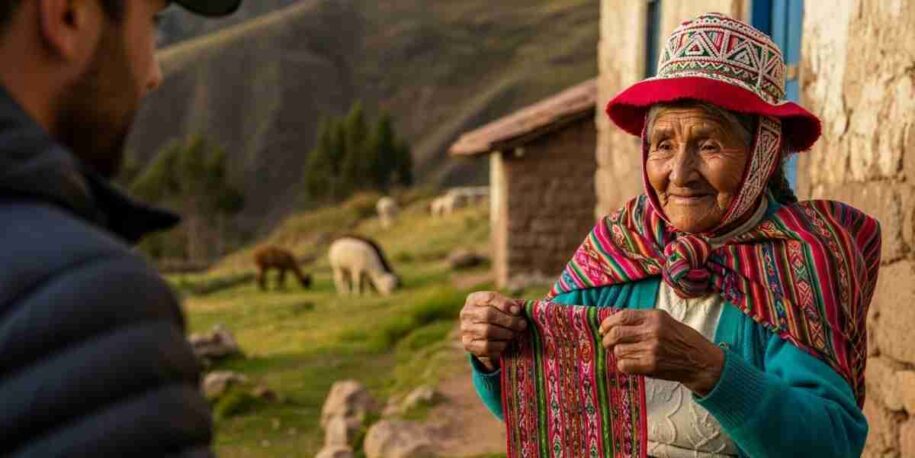While other trails in Peru may test your lungs, the Lares Trek tests your understanding. It’s less about conquering a path carved in stone and more about being welcomed into a world that is very much alive, a world where ancient traditions are not relics in a museum but the daily rhythm of life. If the famous Inca Trail is a journey into history, this is a profound immersion into the living, breathing heart of the Andes. A journey into the present.
This isn’t a trek for those merely collecting passport stamps. It’s for the traveler who understands that the soul of a place is found in its people. I remember a time, sitting on the earthen floor of a small stone house, the air thick with the scent of woodsmoke and simmering potatoes. A woman, her hands moving with the effortless grace of generations, was explaining the patterns in the textile she was weaving. She wasn’t speaking to a tourist; she was sharing her story, her heritage, woven in wool and vibrant dyes. This is the essence of Lares. It’s a path that asks you to slow down, to observe, to listen, and to connect.
Beyond Ruins: The Human Landscape of the Lares Valley
The trail guides you through the spectacular Lares Valley, a landscape that feels painted by a grander hand. You’ll cross high passes with views of snow-dusted peaks, considered by local communities to be powerful Apus, or guardian spirits.You’ll skirt the edges of impossibly blue high-altitude lagoons. But the true landscape here is human.
Unlike more isolated treks, the route deliberately winds through active communities. You see children playing, shepherds guiding their herds of llamas and alpacas, and life unfolding at a pace dictated by the seasons, not by the clock. It’s a powerful reminder that Andean culture is not a fossil; it’s a resilient and dynamic force.
✨ A Guide’s Advice: When you visit a local family, the greatest gift you can bring is not a material object, but your genuine curiosity. Learn a few words in Quechua—Allinllachu? (How are you?), Sulpayki (Thank you). Ask your guide to help you inquire about their work, their family. This simple act of showing respect and interest opens doors far more meaningful than any transaction. It transforms your role from a spectator to a guest.
The Weaver’s Code: A Story in Every Thread
One of the most profound experiences on this trek is witnessing the renowned weaving traditions of Peru firsthand. In villages like Cancha Cancha or Huacahuasi, weaving is more than a craft; it’s a language. The intricate geometric patterns, or pallay, are a visual narrative, conveying myths, social status, and details about the weaver’s community.
This is a tradition passed from mother to daughter, an unbroken thread connecting the present to a time long before the Incas. The vibrant reds, deep blues, and earthy ochres are all derived from natural sources—plants, insects, and minerals—a testament to a deep, ancestral knowledge of Pachamama, or Mother Earth.

❓ Did You Know… The cochineal insect, a parasite that lives on the prickly pear cactus, is the source of the brilliant crimson dye used in many Andean textiles. It takes tens of thousands of dried insects to produce a single kilogram of dye. This knowledge, perfected over centuries, is a form of science passed down through generations of local weavers.
The Lares Trek vs. The Classic Inca Trail
Many travelers ask how this route compares to the world-famous Inca Trail. To think of it as just an alternative Inca Trail is to miss its unique spirit. They are fundamentally different experiences, each with its own purpose.
✅ A Tale of Two Treks
The Classic Inca Trail
- Pros: The undeniable prestige of arriving at Machu Picchu through the Sun Gate, walking on original Inca stone paths, and exploring numerous iconic archaeological sites along the way.
- Cons: High demand requires booking 6-8 months in advance, trails can be crowded, and the focus is primarily on Inca history and archaeology rather than contemporary culture.
The Lares Trek
- Pros: A deep and authentic Andean community immersion. Far fewer crowds, offering a sense of peace and solitude. Flexible itineraries and no need for the long-advance permits of the Inca Trail.
- Cons: The trek does not lead directly to Machu Picchu. Trekkers typically finish the route and then travel by train to Aguas Calientes to visit the citadel the next day. It features fewer major archaeological sites.
For those whose primary goal is to stand on the same stones as the Inca messengers and arrive at Machu Picchu on foot, the choice is clear. But for those who seek a deeper human connection and wish to understand the Peru of today, the Lares Trek offers a journey of unparalleled authenticity. It’s a path that complements, rather than competes with, other treks like the equally stunning Salkantay Trek.
Your Invitation to the Andes
The Lares Trek is an invitation. It’s a chance to step away from the predictable and enter a world of genuine reciprocity and cultural richness. It’s for the traveler who wants their journey to mean something more—not just a vacation, but an exchange. A memory that is not just seen with the eyes, but felt with the heart.
The trail rewards you not with a final, singular destination, but with a collection of quiet moments, shared smiles, and a humbling perspective on a culture that thrives in the high Andes.
Begin Your Authentic Peruvian Journey
The difference between a standard trip and a transformative expedition lies in the details, the perspective, and the human support that frames your experience. If the story of the Lares Trek resonates with you, it may be the start of a conversation about your own journey.

